Introduction: Why Tender Beef Matters in a Crockpot
Cooking beef to achieve a tender texture can sometimes be a difficult task. However, learning how to make beef more tender in a crockpot makes it not only achievable but also incredibly simple. A crockpot’s slow, steady cooking process breaks down tough fibers in the meat, making it soft, juicy, and full of flavor. Whether you’re preparing a roast, stew, or shredded beef, mastering this method is essential for creating mouthwatering dishes with ease.
By following the steps outlined in this guide, you’ll discover foolproof techniques to consistently cook tender beef in your crockpot. Let’s dive in and transform your slow-cooking skills!
If you’re looking to add variety to your meals, you might also like what to add to bland chicken casserole for inspiration.
Benefits of Slow Cooking for Tender Beef
Slow cooking has many advantages, especially when it comes to tenderizing beef:
- Even-Heat: The steady, low temperature of a crockpot slowly softens the meat’s fibers.
- Flavor Development: With hours of cooking, spices, and seasonings have time to infuse into the beef.
- Ease and Convenience: You can set the crockpot and forget about it until the meal is ready.
By understanding how slow cooking works, you can create dishes similar to recipes like pepper steak recipes that rely on tenderness for success.
Understanding How Slow Cooking Makes Beef Tender
Making beef tender in a crockpot starts with understanding what happens during the cooking process. Let’s break it down.
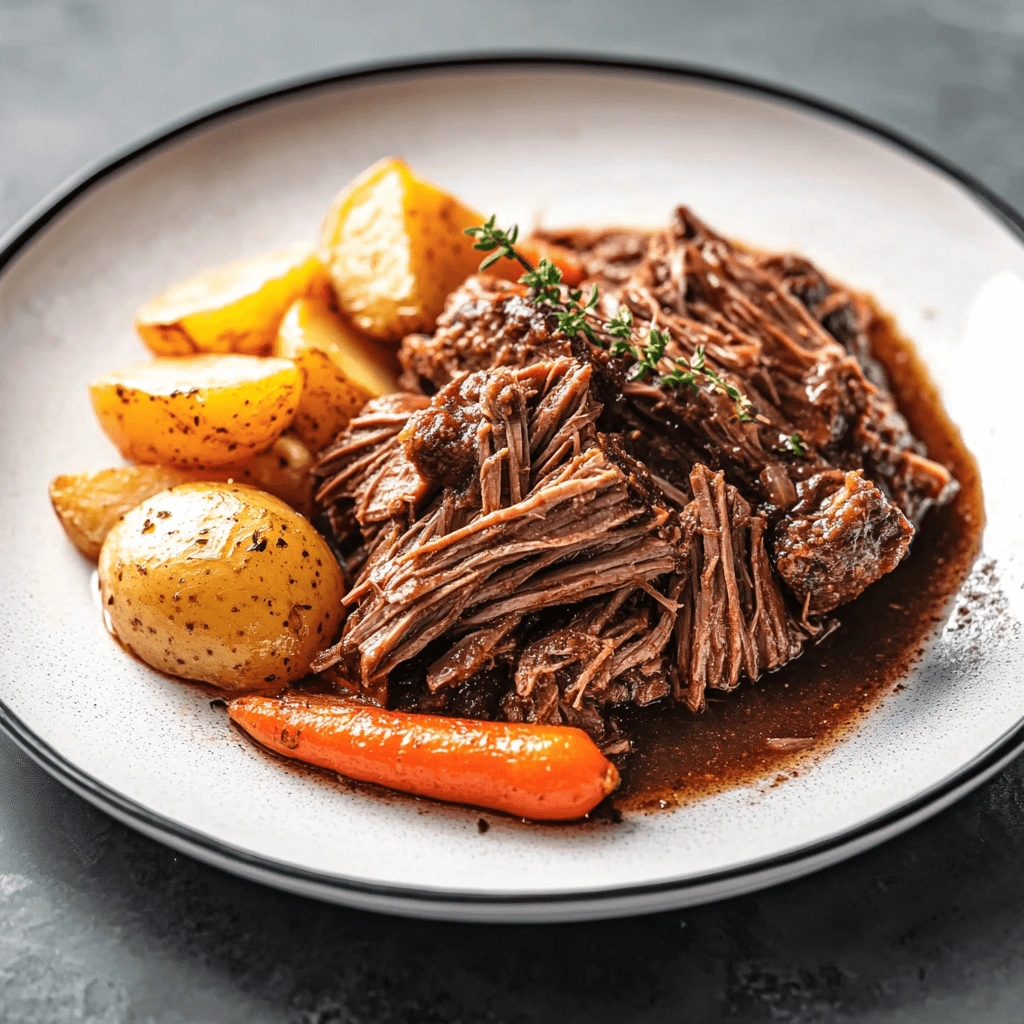
What Happens to Beef During Slow Cooking?
When beef is cooked slowly, a few key things take place:
- Breaking Down Collagen: Connective tissue in beef contains collagen, which turns into gelatin during long, slow cooking. This makes the meat soft and flavorful.
- Melting Fat: Fat in the meat melts over time, adding moisture and richness.
- Retaining Juices: A crockpot traps steam, which prevents the meat from drying out.
For tips on avoiding common cooking issues, like watery results, check out watery broccoli casserole causes and fixes.
The Role of Connective Tissue
Cuts with a lot of connective tissue, such as chuck roast, might seem tough at first. However, when cooked slowly, these cuts transform into something tender and delicious. This is why they are ideal for crockpot recipes.
Choosing the Right Cut of Beef
Choosing the right cut is a critical step in mastering how to make beef more tender in a crockpot. Not all types of beef are suitable for slow cooking, as some cuts lack the connective tissue needed to break down into tender, flavorful meat. Selecting the appropriate cuts ensures your dish turns out perfectly every time.
Recommended Cuts for Slow Cooking
Some cuts of beef work better than others for crockpot cooking:
- Chuck Roast: This cut is affordable and becomes very tender after slow cooking.
- Brisket: Known for its rich flavor, brisket softens beautifully in a crockpot.
- Short Ribs: The extra connective tissue in short ribs breaks down over time, adding both flavor and texture.
- Shank: While leaner, shank benefits from long cooking times to reach full tenderness.
For more guidance on beef cuts, visit best cuts for pepper steak.
Why Tough Cuts Are Best
Preparing Your Beef for Crockpot Success
Proper preparation is just as important as choosing the right cut. If you skip this step, your beef might not turn out as tender as you’d like.
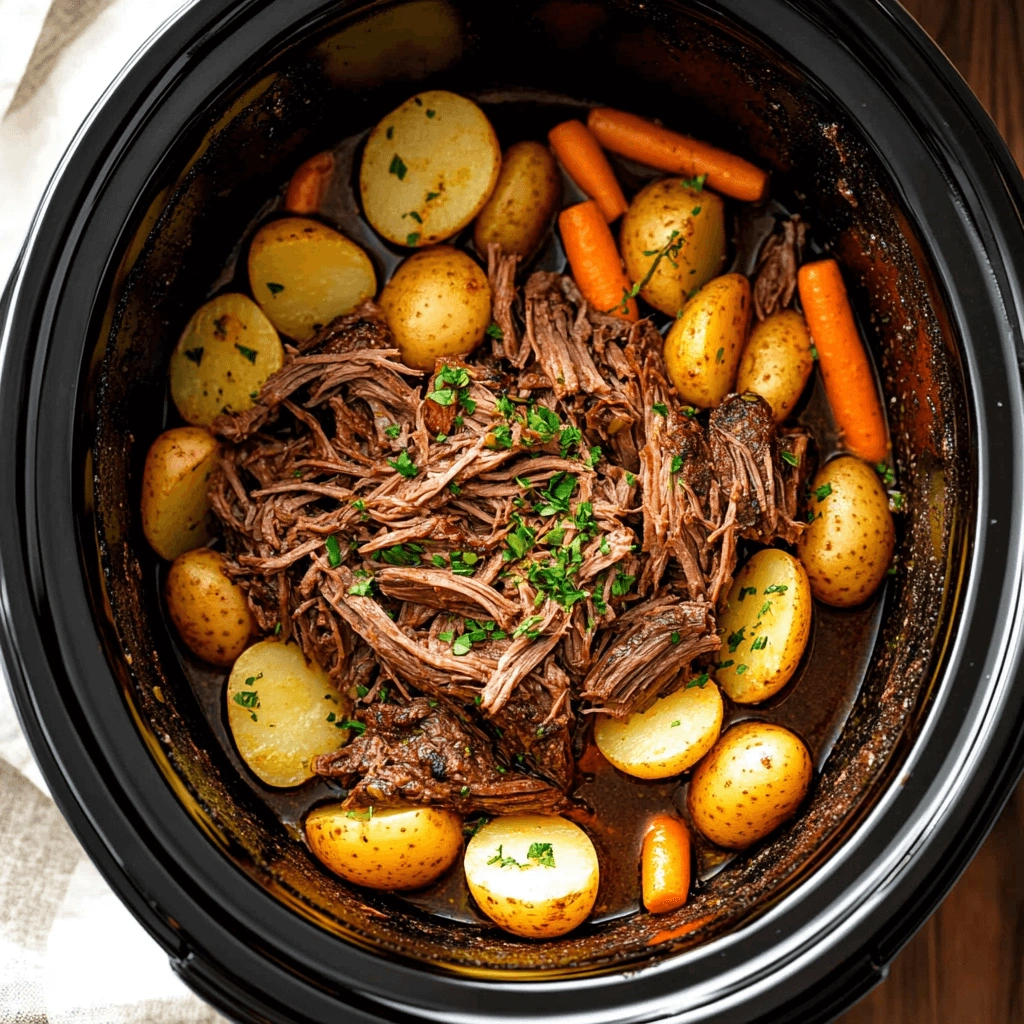
Trimming and Seasoning
- Remove Excess Fat: Although a small amount of fat adds flavor, leaving too much can result in an overly greasy dish. Trim away large pieces of fat while leaving smaller bits to enhance taste.
- Season Generously: Don’t be shy with salt, pepper, and herbs like thyme or rosemary. These flavors will develop more as the beef cooks.
If you’re looking for seasoning ideas, you might enjoy spicy orange chicken recipes for some inspiration.
Marinating Techniques
Marinating beef before slow cooking can improve both flavor and tenderness:
- Use Acidic Ingredients: Marinades with vinegar, lemon juice, or yogurt help break down the meat’s fibers, making it softer.
- Allow Enough Time: Marinate the beef for at least four hours or overnight for the best results.
- Vacuum-Seal If Possible: Using a vacuum-sealed bag can speed up the marinating process.
Searing the Beef
While it’s optional, searing the beef before adding it to the crockpot can make a big difference. A quick sear in a hot pan creates a crust that adds a deeper flavor to the final dish.
Want more tips on combining textures? Try these crispy rice recipes for creative ideas.
The Role of Liquids in How to Make Beef More Tender in a Crockpot
Liquids are crucial when learning how to make beef more tender in a crockpot. They help prevent the meat from drying out, even during long cooking periods, ensuring the beef remains juicy and flavorful.
Without sufficient moisture, even the best-prepared cuts can end up tough and unappetizing. By selecting the right liquids, such as broth for richness, wine for depth, or a splash of vinegar for acidity, you can significantly enhance both the texture and flavor of your dish. Choosing and using liquids wisely is key to creating tender, mouthwatering beef every time.
Using Broth, Wine, or Vinegar for Tender Beef
Adding liquids like beef broth, red wine, or a splash of vinegar is essential when learning how to make beef more tender in a crockpot. These liquids not only prevent the meat from drying out but also play a vital role in breaking down tough muscle fibers, resulting in tender and flavorful beef.
- Beef Broth: This is the go-to liquid for a rich and hearty base, making it ideal for most crockpot recipes.
- Red Wine: For added complexity, red wine deepens the flavor and works especially well in dishes like braised brisket.
- Vinegar: A small amount of apple cider or balsamic vinegar can enhance tenderness by softening the meat without overpowering its natural flavors.
Using these liquids thoughtfully can make a significant difference in the texture and taste of your crockpot beef.
For more insights into how acidity improves cooking, you can explore recipes like spicy orange chicken recipes, which also rely on acidic ingredients.
Moisture-Retaining Ingredients
In addition to liquids, certain ingredients help keep the beef moist while boosting its flavor. For instance:
- Tomato Paste: Adds sweetness and thickens the sauce.
- Soy Sauce: Contributes umami while keeping the beef juicy.
- Canned Tomatoes: These work particularly well in stews or pot roasts, as they release moisture and add depth.
By combining these liquids and ingredients, you ensure that your beef stays tender throughout the slow cooking process.
Layering Ingredients Correctly for How to Make Beef More Tender in a Crockpot
The way you layer ingredients in a crockpot can significantly impact the tenderness and flavor of the beef. Consequently, proper layering ensures even cooking and maximum flavor infusion.
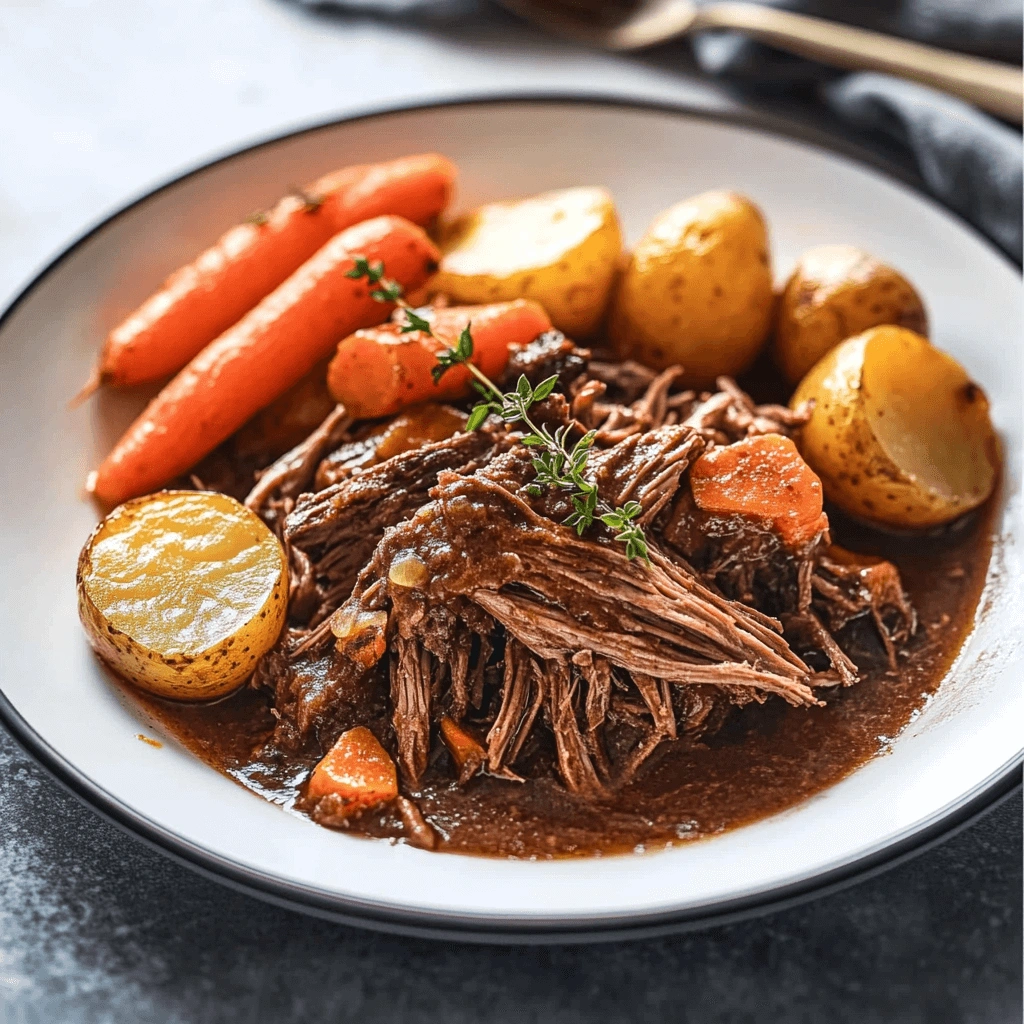
Why Beef Should Go at the Bottom
Placing the beef at the bottom of the crockpot is essential when learning how to make beef more tender in a crockpot. The bottom of the crockpot is the hottest part, which helps the meat cook evenly and thoroughly.
Additionally, as the beef cooks, it absorbs the flavors and juices from the ingredients layered above it. This process not only tenderizes the beef but also infuses it with rich, savory flavors, making your dish even more delicious.
For additional tips on arranging ingredients, consider checking out watery broccoli casserole causes and fixes, which highlight the importance of proper layering in slow-cooked dishes.
The Role of Vegetables and Herbs
Vegetables and herbs play a key role when mastering how to make beef more tender in a crockpot. Root vegetables like carrots, onions, and celery release moisture as they cook, helping to keep the beef juicy and flavorful.
Meanwhile, aromatic herbs such as rosemary and thyme enhance the overall flavor profile of the dish. These ingredients not only add depth but also complement the tender beef, making your crockpot creation a true crowd-pleaser.
When layering:
- Start with dense vegetables like potatoes or carrots at the bottom to act as a buffer.
- Place the beef on top so it benefits from direct heat and juices.
- Add softer vegetables and herbs in the last to prevent them from overcooking.
This strategic layering not only improves tenderness but also ensures the flavors meld perfectly.
Temperature Settings for How to Make Beef More Tender in a Crockpot
The temperature settings you choose are critical when mastering how to make beef more tender in a crockpot. Using the correct setting ensures the beef cooks slowly and evenly, allowing the connective tissues to break down properly. Selecting the right temperature is essential for achieving the best possible tenderness and flavor in your dish.
Why Low-and-Slow Cooking Works Best
Timing Is Key for How to Make Beef More Tender in a Crockpot
Finally, cooking time is one of the most important aspects of mastering how to make beef more tender in a crockpot. Overcooking can lead to dry, stringy meat while undercooking results in beef that is tough and chewy.
To achieve perfectly tender beef, it’s crucial to get the timing right. Following recipe guidelines and checking for doneness at the appropriate stages will help you create delicious, juicy results every time.
Optimal Cooking Times
The ideal cooking time depends on the cut of beef and the crockpot setting. For example:
- Chuck Roast: 6–8 hours on low or 4–5 hours on high.
- Brisket: 8–10 hours on low or 5–6 hours on high.
- Short Ribs: 7–8 hours on low or 4 hours on high.
To prevent overcooking, avoid lifting the lid too often, as this can release heat and extend the cooking time.
How to Test Tenderness
To determine whether the beef is done, use a fork to test its texture:
- Insert the fork into the meat and twist gently.
- If the beef falls apart easily, it’s ready to serve.
- If it resists, give it another 30–60 minutes and test again.
For other timing tips in slow-cooked dishes, check out the best cuts for pepper steak, which discusses the relationship between cuts and cooking times.
Common Mistakes in How to Make Beef More Tender in a Crockpot
While a crockpot is forgiving in many ways, there are some common mistakes that can impact the tenderness of your beef. Understanding and avoiding these pitfalls is key to success.
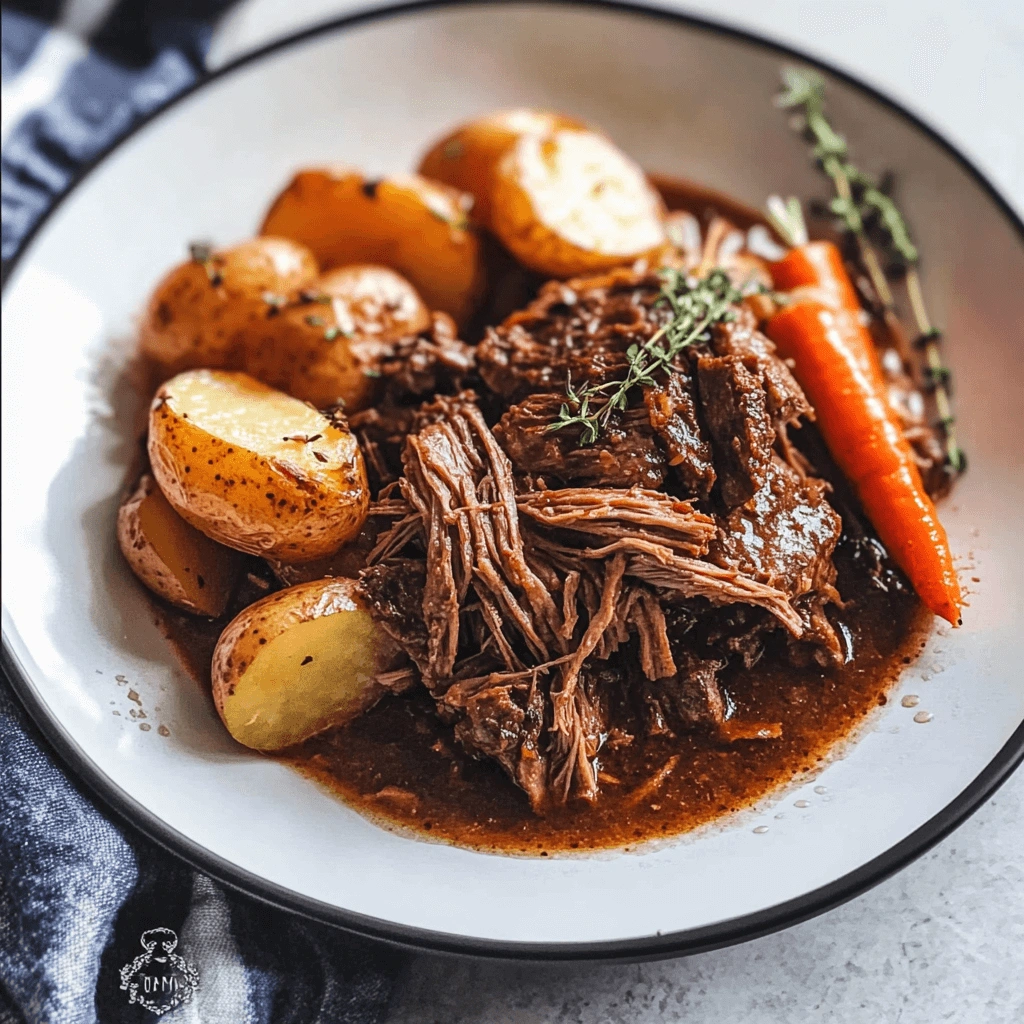
Overcooking or Undercooking the Beef
Timing is everything when it comes to slow cooking. Overcooking beef can dry it out, making it stringy and unappetizing. On the other hand, undercooking leaves the collagen in the meat intact, resulting in toughness.
Tips to Avoid Timing Errors:
- Always follow recipe recommendations for cooking time and setting (low or high).
- Check tenderness periodically in the final stages using a fork test.
- Resist lifting the lid frequently during cooking, as it releases heat and extends cooking time.
Choosing the Wrong Liquid
Using insufficient or the wrong liquids can ruin your efforts in how to make beef more tender in a crockpot. For instance, relying on plain water may not provide the richness needed to enhance the beef’s flavor.
On the other hand, using overly acidic liquids can overpower the dish, masking the natural taste of the meat. Choosing balanced liquids like broth or a touch of wine ensures both tenderness and a delicious, well-rounded flavor.
Best Practices for Liquids:
- Use a mix of broth and wine for balance.
- Avoid overdoing strong flavors like vinegar—stick to small amounts.
To learn more about managing liquid proportions in other recipes, consider watery broccoli casserole causes and fixes.
What to Do If Your Beef Is Tough: Fixing How to Make Beef More Tender in a Crockpot
Sometimes, even with careful preparation, beef can still turn out tougher than expected. However, when learning how to make beef more tender in a crockpot, all is not lost—there are effective ways to salvage your dish. With the right adjustments, you can still achieve a tender, flavorful result.
Add More Cooking Time
Shredding Techniques
When the beef remains tough even after extended cooking, shredding it is an effective way to improve the texture. As part of mastering how to make beef more tender in a crockpot, use two forks to gently pull the beef apart into smaller pieces.
After shredding, mix the beef back into the cooking liquid. This step helps reintroduce moisture into the meat while softening its texture, ensuring your dish turns out juicy and flavorful despite initial challenges.
For tips on handling different cuts of meat, check out the best cuts for pepper steak.
Serving Tips for How to Make Beef More Tender in a Crockpot
Presentation is the final step in mastering how to make beef more tender in a crockpot. Proper slicing or shredding, along with thoughtful pairings, can transform your dish from ordinary to extraordinary.
Slicing and Shredding Methods
- Slicing: When serving roasts, always slice against the grain. This technique shortens the muscle fibers, making the beef easier to chew and ensuring a tender bite.
- Shredding: Pulled beef is perfect for dishes like tacos or sandwiches. After shredding, toss the meat back into the cooking juices. This not only reintroduces moisture but also infuses the beef with additional flavor for a juicy and delicious result.
These simple yet effective methods are essential for showcasing your perfectly cooked crockpot beef.
For slicing inspiration, explore recipes like short rib cooking tips, which offer complementary techniques.
Pairing with the Right Sides
The right side dishes are essential when learning how to make beef more tender in a crockpot and creating a balanced meal. Pairing your beef with sides that enhance its flavors and textures can elevate your dish to the next level.
- Mashed Potatoes: Their creamy texture complements the richness of tender, slow-cooked beef, while also soaking up the flavorful juices.
- Roasted Vegetables: Carrots, parsnips, and Brussels sprouts add both color and nutrients, creating a balanced contrast to the beef.
- Buttered Rice or Egg Noodles: These options absorb the savory juices, making them a hearty and satisfying base for your crockpot beef.
By combining these sides with your perfectly cooked beef, you’ll master not only how to make beef more tender in a crockpot but also how to serve it in the most delicious way possible.
If you’re looking for creative side ideas, the best corn casserole recipes offer inspiration for hearty pairings.
FAQs About How to Make Beef More Tender in a Crockpot
When learning how to make beef more tender in a crockpot, readers often have common questions about achieving the best results. To help, here are answers to some frequently asked questions that can guide you toward consistently tender and flavorful beef.
Why Did My Beef Turn Out Dry or Chewy?
This usually happens when beef is overcooked or a lean cut is used, which isn’t ideal for slow cooking. To master how to make beef more tender in a crockpot, stick to cuts like chuck roast or brisket, as they have the connective tissue needed to break down during slow cooking. Additionally, always include enough liquid in the recipe to keep the meat moist and flavorful throughout the cooking process.
Can You Re-Cook the Beef to Make It More Tender?
Yes, you can return the beef to the crockpot with additional liquid and cook it on the low setting for another hour. When learning how to make beef more tender in a crockpot, this method allows the collagen to break down further, improving the meat’s texture.
For additional tips, check out why beef might turn out tough and how to troubleshoot other slow-cooking challenges.
Conclusion: Final Thoughts on How to Make Beef More Tender in a Crockpot
In summary, mastering how to make beef more tender in a crockpot requires thoughtful preparation, selecting the right ingredients, and following proper cooking techniques. Every step, from choosing cuts like chuck roast to layering ingredients correctly and keeping an eye on cooking time, contributes to the final result. By avoiding common mistakes and knowing how to salvage tough beef, you can consistently achieve tender, flavorful dishes even when challenges arise.
For more slow-cooking recipes and expert tips, visit AllRecipes’ slow-cooker guide for further inspiration.
With these insights, your crockpot beef dishes are sure to be flavorful, tender, and crowd-pleasing every time. Happy cooking!

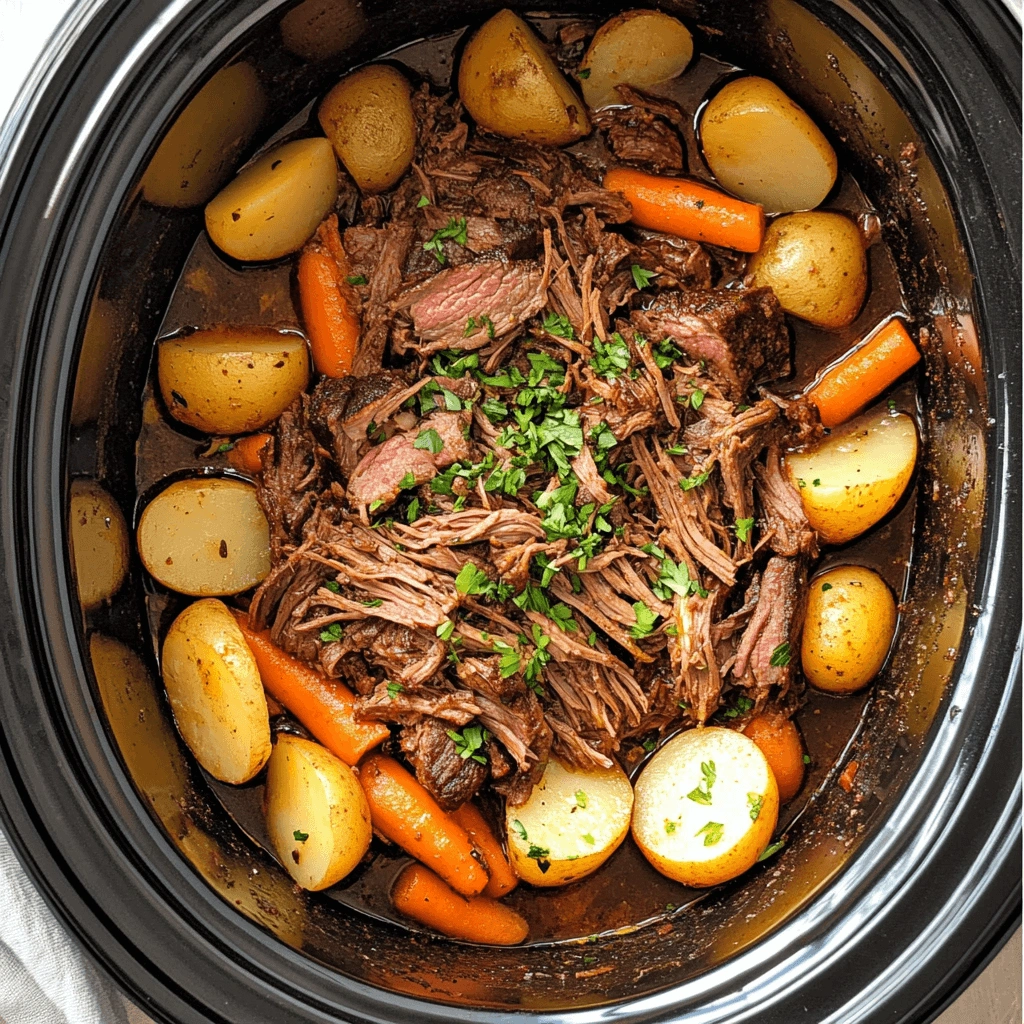
3 thoughts on “How To Make Beef More Tender In A Crockpot: Ultimate Guide”